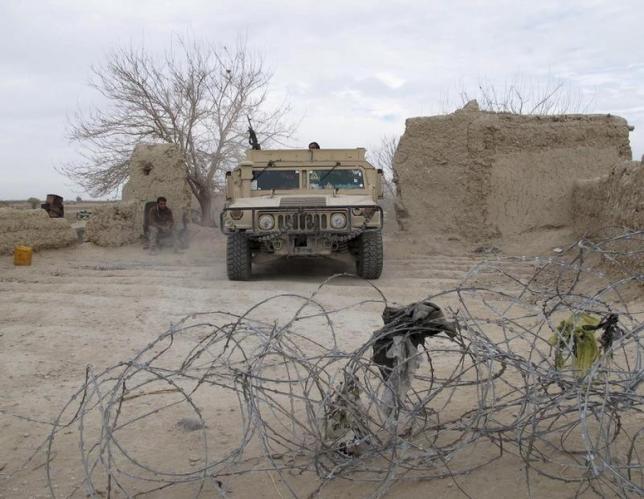
An Afghan National Army (ANA) vehicle is seen parked at an outpost in Helmand province, Afghanistan December 25, 2015. REUTERS/Abdul Malik
Afghan troops have pulled out of bases in Musa Qala, a strategic district of the southern province of Helmand, after months of fierce clashes with Taliban insurgents, officials said on Saturday.
Helmand, a traditional heartland of the Taliban and one of the world’s biggest centers of opium production, has been threatened for months. The United States recently sent hundreds of soldiers to the province to prop up its defense.
The commander of the Afghan army’s 215th corps, Mohammad Moeen Faqir, said troops had been ordered to withdraw from Roshan Tower, their main base in Musa Qala, in addition to other frontiers to support Gereshk, straddling the main Highway One which links Kabul with the south and west.
“Their presence in the area did not mean anything,” he said. “We will use them in battle with enemies in other parts of Helmand province.”
Violent fighting has erupted in Musa Qala and other parts of Helmand for months and the Taliban invaded the district in August last year before they were driven back by Afghan forces supported by U.S. airstrikes.
Musa Qala itself is a dry and lightly populated district that British and American troops fought hard to control between 2006 and 2008 but its loss could lead to further losses elsewhere, including Sangin where government forces have been clinging on.
“Now that the government has withdrawn its forces from this district, we will see Kajaki, Gereshk and Sangin collapsing very soon,” said deputy provincial council member Abdul Majid Akhundzada.
In a statement, the Taliban said it had seized armored personnel carriers, bulldozers and other equipment abandoned in Roshan Tower and nine other checkpoints.
After the pulling out of Afghani troops, local officials started speculating whether that the government had reached an arrangement with the Taliban but Abdul Jabar Qahraman, presidential envoy for security affairs in Helmand, denied any such pact.
“There wasn’t any deal,” he said. “We learnt that there was no need to continue the fight in that area.”
No comment was immediately available from the ministry of defense in Kabul.
The outgoing commander of international forces, Gen. John Campbell, recently sent hundreds of American troops to Helmand, where they support and train Afghan forces but do not fight.
A spokesman for NATO’s Resolute Support mission in Kabul said its purpose was to train, advise and assist and referred questions on Afghan troop movements to the defense ministry.
According to U.S. officials’ estimations, the Taliban dominates or threatens almost a third of the country and has complete control over at least four districts. Although it briefly took the northern city of Kunduz last year, it does not control any provincial capitals.
Although Helmand has been one of the provinces most in jeopardy, the Taliban have been advancing across the country, setting severe strain on government troops, who have been fighting unaided since international forces terminated most combat operations in 2014.
